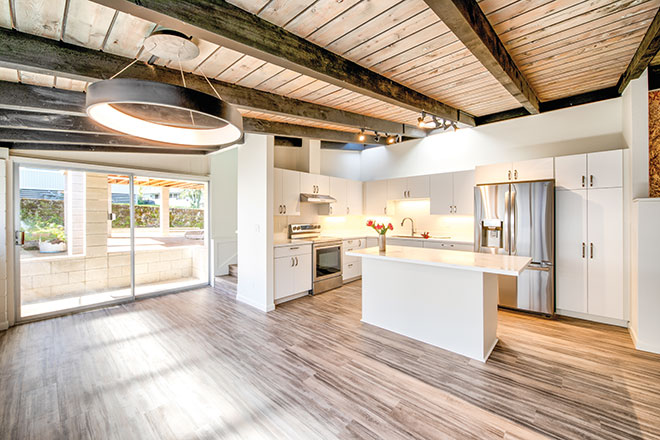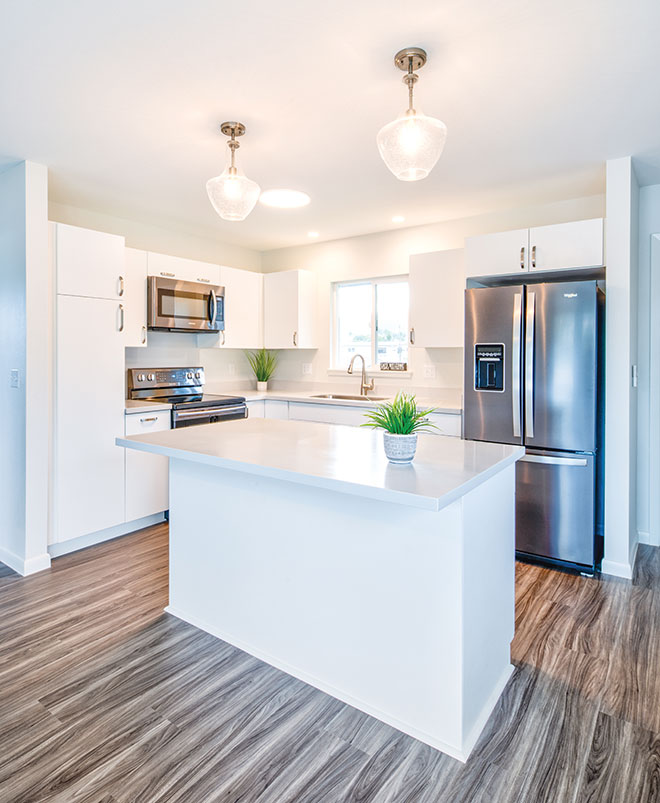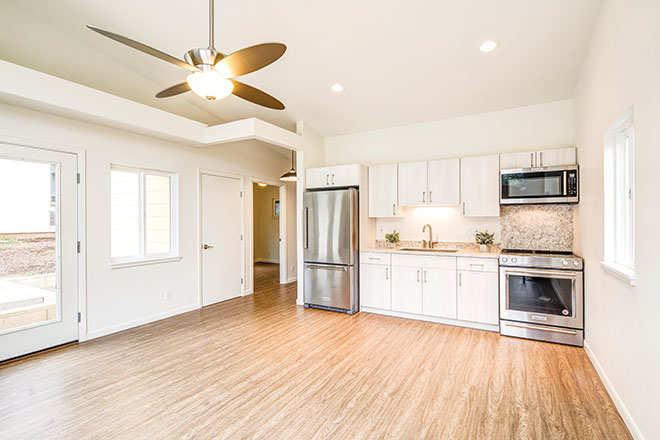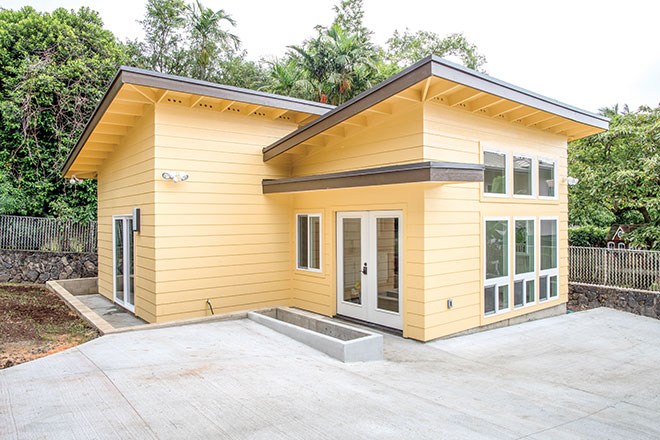Choose between an ADU, ohana or addition
According to Pew Research, in 2021, almost 60 million American households were considered “multigenerational,” which is generally defined as a family in which three or more generations live together.
Here in the Aloha State, strong family values and the high cost of both caregiving and real estate have resulted in Hawaii’s top ranking as the state with the most multigenerational families sharing a home, per the United States Census Bureau.
“Multigenerational living works beautifully when every family member has adequate personal space and easy access to common living areas,” says Evan Fujimoto, president of Honolulu design/build firm Graham Builders. “A designer with experience in multigenerational residences can help anticipate issues with noise, privacy and accessibility, and create a home that is comfortable for everybody in the family.”
In Hawaii, options for increasing living space include accessory dwelling units, ohana units and additions.
“Many people are still confused about which is which, and there are some significant differences between them,” Fujimoto says.
ACCESSORY DWELLING UNITS
Attempting to alleviate Oahu’s housing shortage, former mayor Kirk Caldwell signed the ADU Ordinance into law almost eight years ago.
“An ADU is a second dwelling unit that includes its own kitchen, bedroom and bathroom, and utility meter,” Fujimoto says. “It can be attached or detached from the primary residence. Depending on the size of the property, it’s limited to dimensions of 400-800 square feet.”
OHANA UNITS
Unique to the islands, Hawaii’s ohana dwellings are similar to ADUs. Like ADUs, ohana units may have their own kitchens, and both ADUs and ohanas require solar hot water tanks, off-street parking and must conform with city ordinances.
“With an ohana, the property owner must live in one dwelling, and a relative in the other,” Fujimoto explains. “With ADUs, the owner must live in one residence — but anybody else, related or unrelated, may live in the other.”
ADDITIONS
If an ohana unit or ADU doesn’t work for the property, consider building a simple addition. Additions cannot have a kitchen, laundry or meter, but a wet bar — a refrigerator and compact bar sink — might be adequate for the family’s needs.
Two design challenges are common in many multigenerational homes: adequate storage space and shared kitchens.
“Smart storage management is critical,” Fujimoto says. “We try to include individual closets for each family member, and drop zones in laundry rooms, garages and mudrooms.”
Then there’s the kitchen — the center of daily life for most families. When several generations are working to prepare meals in a single space, harmony can turn into discord.
Graham Builders’ team offers a brilliant solution: the ohana kitchen. “It’s larger, with multiple prep stations, sinks and appliances that allow multiple family members to prep, cook and eat separately, yet simultaneously,” Fujimoto explains.
Established in 1990, Graham Builders has helped hundreds of local multigenerational families create comfortable, beautiful homes that offer privacy and accessibility for each member of the ohana. The first home construction company in Hawaii to have a certified aging-in-place specialist on staff, Graham Builders is also the recipient of the Better Business Bureau of Hawaii Torch Award for ethics in small business. Learn more about the basics of home remodeling and rebuilding at Graham Builders’ free Building Your Home for Life seminar from 9 to 11 a.m. on Aug. 12. For information and registration, visit grahambuilders.com or call 808-593-2808.
GRAHAM BUILDERS
CONTACT 808-593-2808
WEB grahambuilders.com



